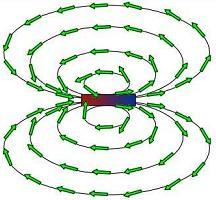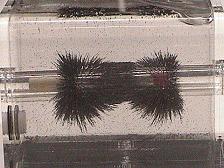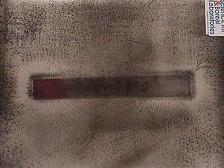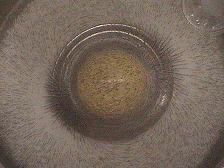Illustrate magnetic field lines with iron filings suspended in a thick liquid.
Teachable Topics:
- Shapes of magnetic fields
Theory:
Magnets are fun and interesting because they seem to affect other objects around them without ever having to make contact with those objects. One way to think about magnets is to think of them filling the space around them with a magnetic field. At every point in space around a magnet, there is a vector (or arrow) that points in the direction in which a tiny bar magnet would align itself. If you imagine yourself starting at a point in space and moving around, always travelling in the direction of the magnetic field vector at your current position, you'll trace out a line. That imaginary line is called a magnetic field line.
 Figure 1: Magnetic field represented by vectors.
|
 Figure 2: Magnetic field lines traced out by vectors.
|
Magnetic field lines can't be seen, but they can be illustrated with containers filled with iron filings that are suspended in a thick liquid (like glycerin). If you put a magnet near such a container, the tiny iron filings will align themselves with the magnetic field. You'll thus see the filings forming in lines. The line patterns depend on the shape of the magnet and on the direction of magnetization in the material, so you'll see a different pattern depending on whether you use a bar magnet or a horseshoe magnet, or some other kind.
Apparatus:
- various magnets (bar, horseshoe, cylindrical, etc...)
- containers filled with iron filings suspended in a thick liquid
Procedure:
- Just place the magnets inside or near the containers containing the filings.
- Here are some of the patterns that can be seen:
 |
 |
 |
 |
Figure 2: Magnetic Field lines around several different types of magnets.



